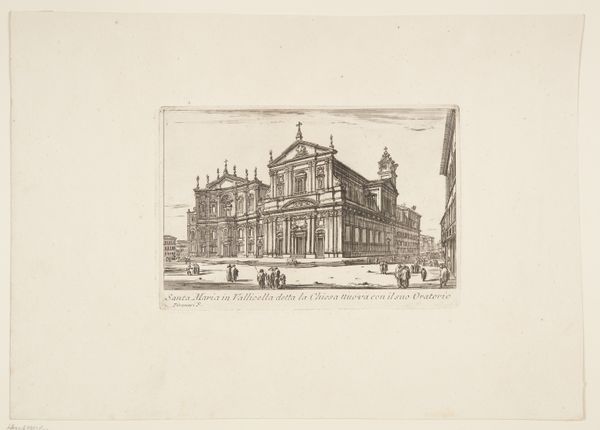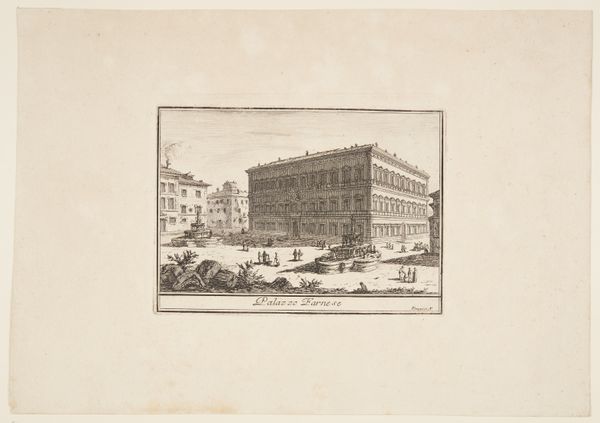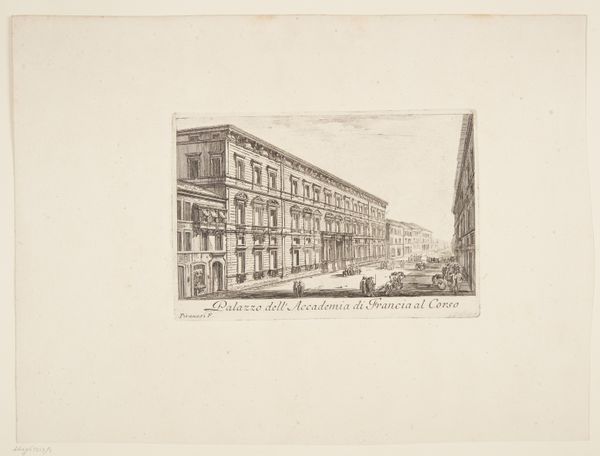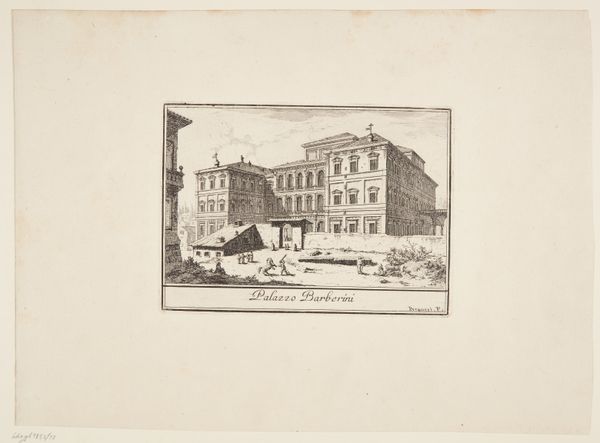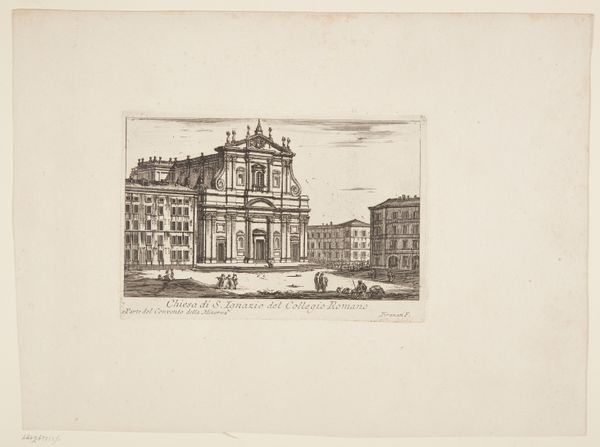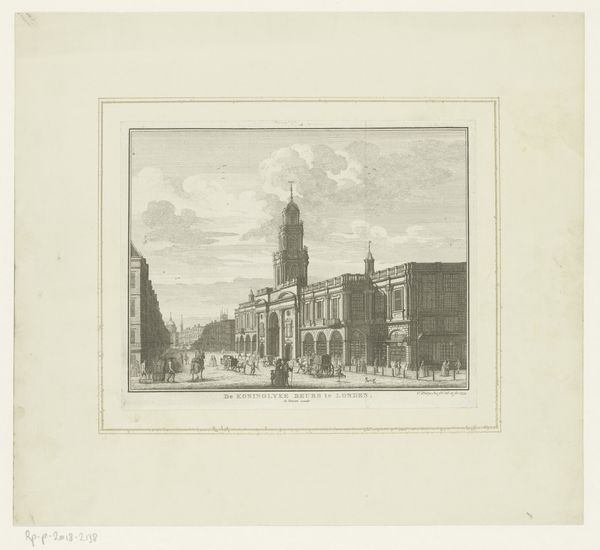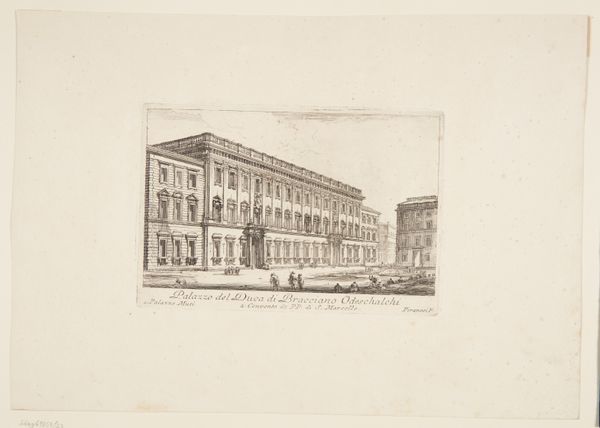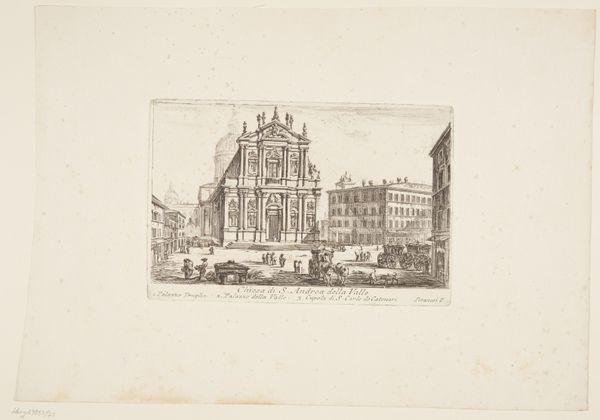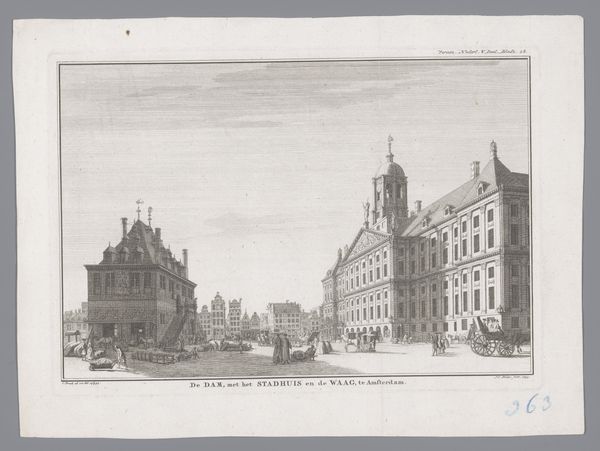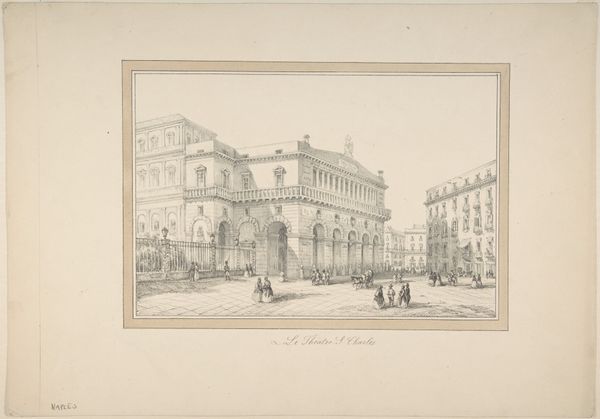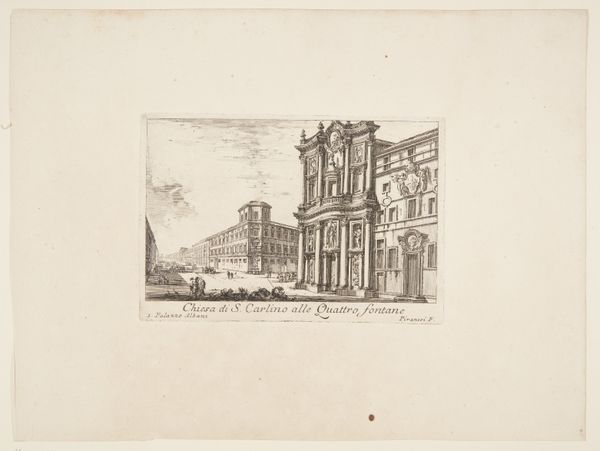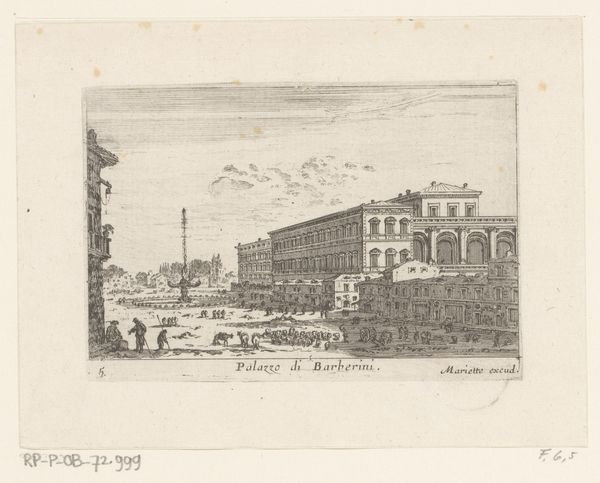
Palazzo della Sapienza met de Sant' Ivo alla Sapienza te Rome 1745
0:00
0:00
print, etching, engraving, architecture
#
baroque
# print
#
etching
#
cityscape
#
history-painting
#
engraving
#
architecture
Dimensions: height 129 mm, width 194 mm
Copyright: Rijks Museum: Open Domain
Editor: This is Giovanni Battista Piranesi's "Palazzo della Sapienza met de Sant' Ivo alla Sapienza te Rome," created around 1745, using etching and engraving. The precision of the lines capturing the architecture is really striking. What elements of its formal structure stand out to you? Curator: The dynamic interplay of light and shadow immediately arrests the eye. Observe how Piranesi utilizes hatching and cross-hatching to model form and delineate spatial recession. Notice also the considered arrangement of architectural elements within the frame. Are you conscious of how the dome dominates the composition, creating a focal point and dictating the visual hierarchy? Editor: Yes, I see that! It really emphasizes the monumentality of the building. Is there any particular method to how Piranesi uses these formal techniques? Curator: Certainly. By manipulating the contrast between light and shadow, and juxtaposing linear precision with looser, more atmospheric passages, Piranesi introduces a level of drama and theatricality into what might otherwise be a purely documentary record. Have you considered the geometrical aspects of the Baroque architectural details and the repetitive nature of the evenly placed windows? Editor: It makes the structure appear imposing yet accessible. Curator: Precisely. He masterfully manipulates perspective, intensifying the sense of depth and grandeur, compelling the viewer’s gaze deep into the pictorial space. The meticulous detail given to the architecture underscores the symbolic significance of these buildings within the Roman cityscape, do you not agree? Editor: I do now, it also reflects a deep appreciation for geometric forms and architectural precision, even if he's taking artistic license. Thanks, I see so much more than I did originally. Curator: Indeed, formal analysis provides a powerful lens through which we can understand the artist’s intent. By examining the intrinsic elements of the artwork, we gain a richer appreciation for its aesthetic and intellectual qualities.
Comments
No comments
Be the first to comment and join the conversation on the ultimate creative platform.
